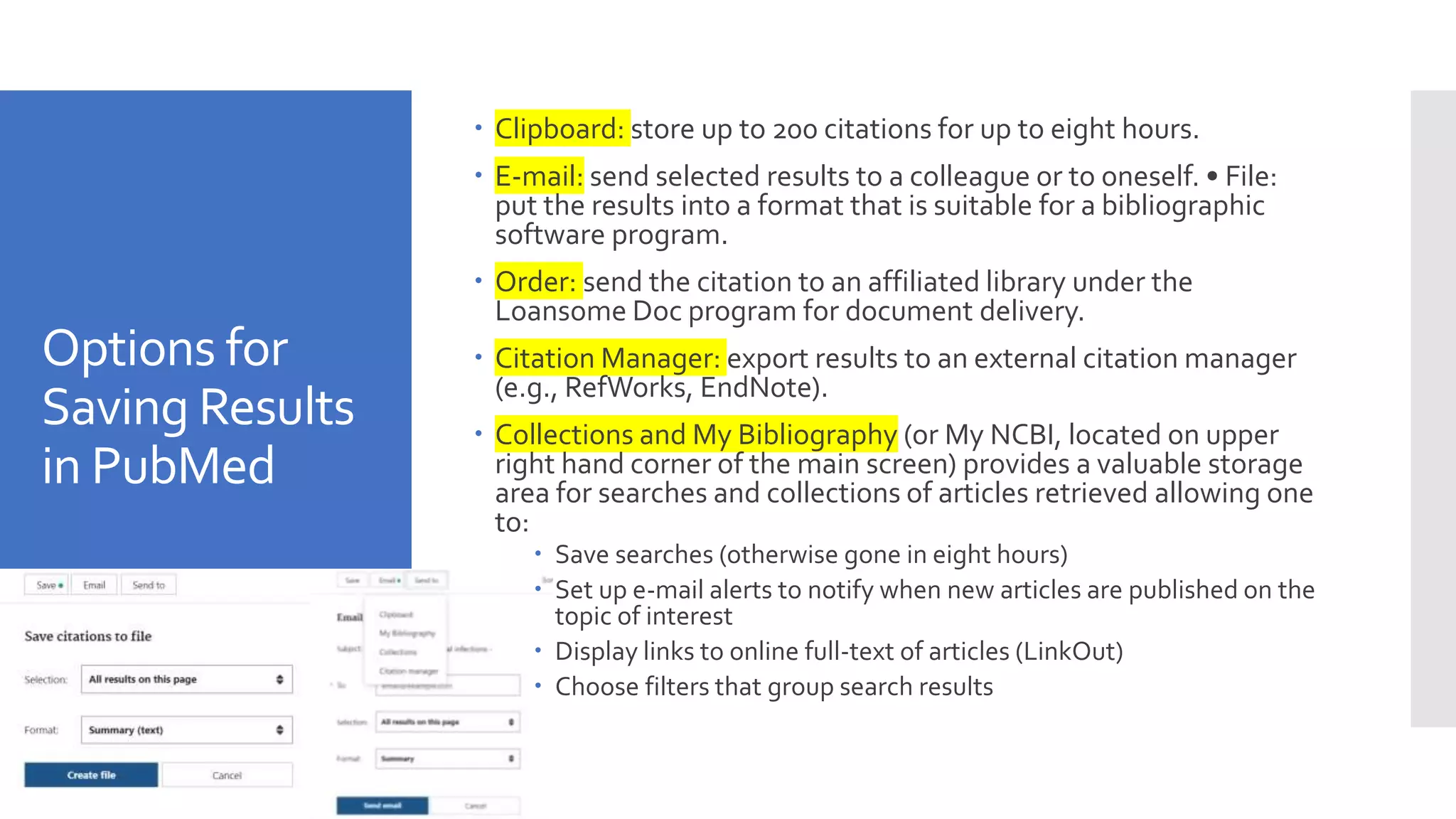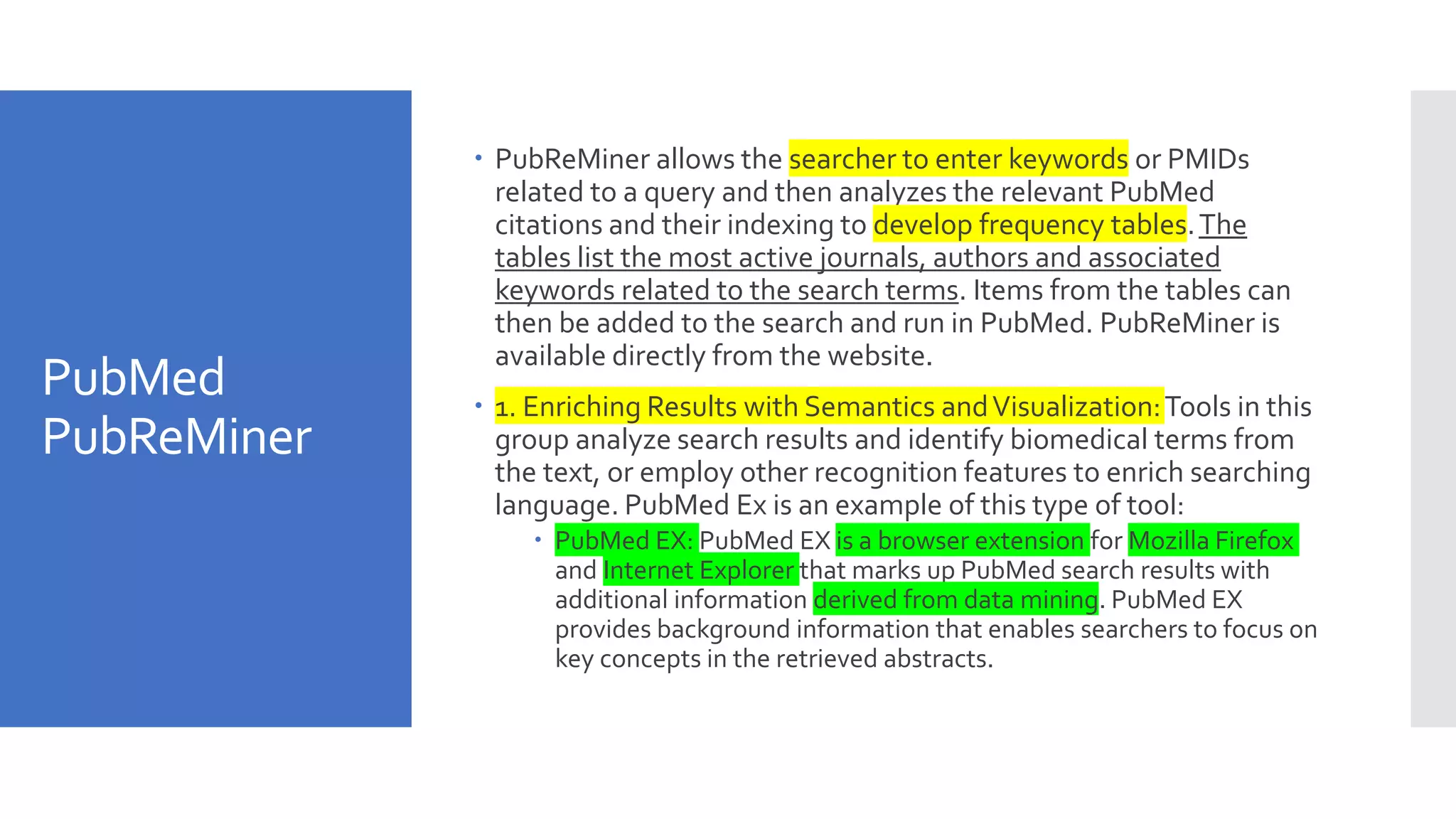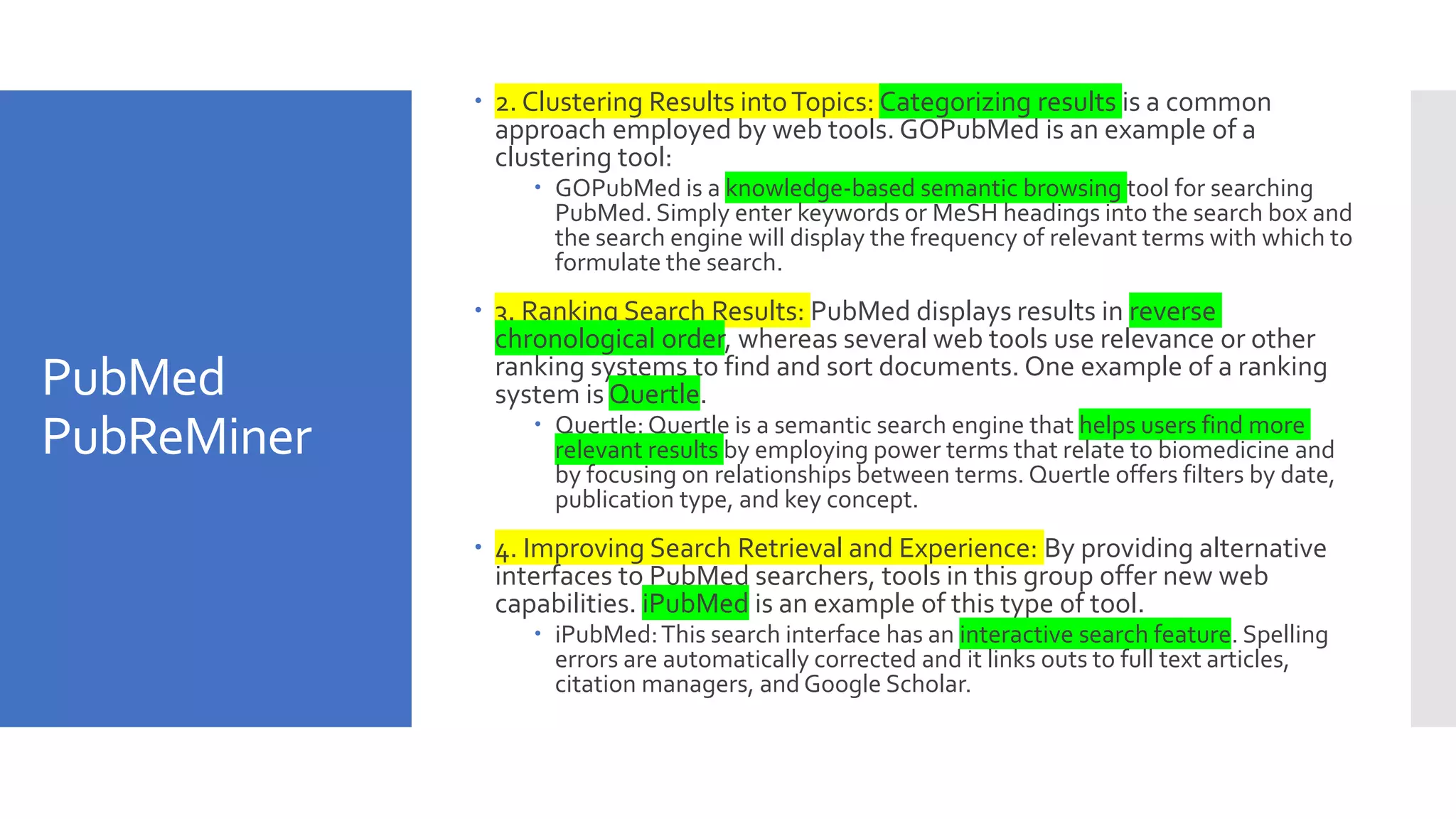The document discusses the acquisition and lifecycle of healthcare information systems, emphasizing medical information structuring, searching, and retrieval techniques. It highlights the significance of search engines, particularly Google and PubMed, in accessing medical literature, outlines their functionalities, and provides guidance on effective searching strategies. Additionally, it covers the complexity of PubMed in comparison to general search engines and presents various tools to enhance search capabilities.
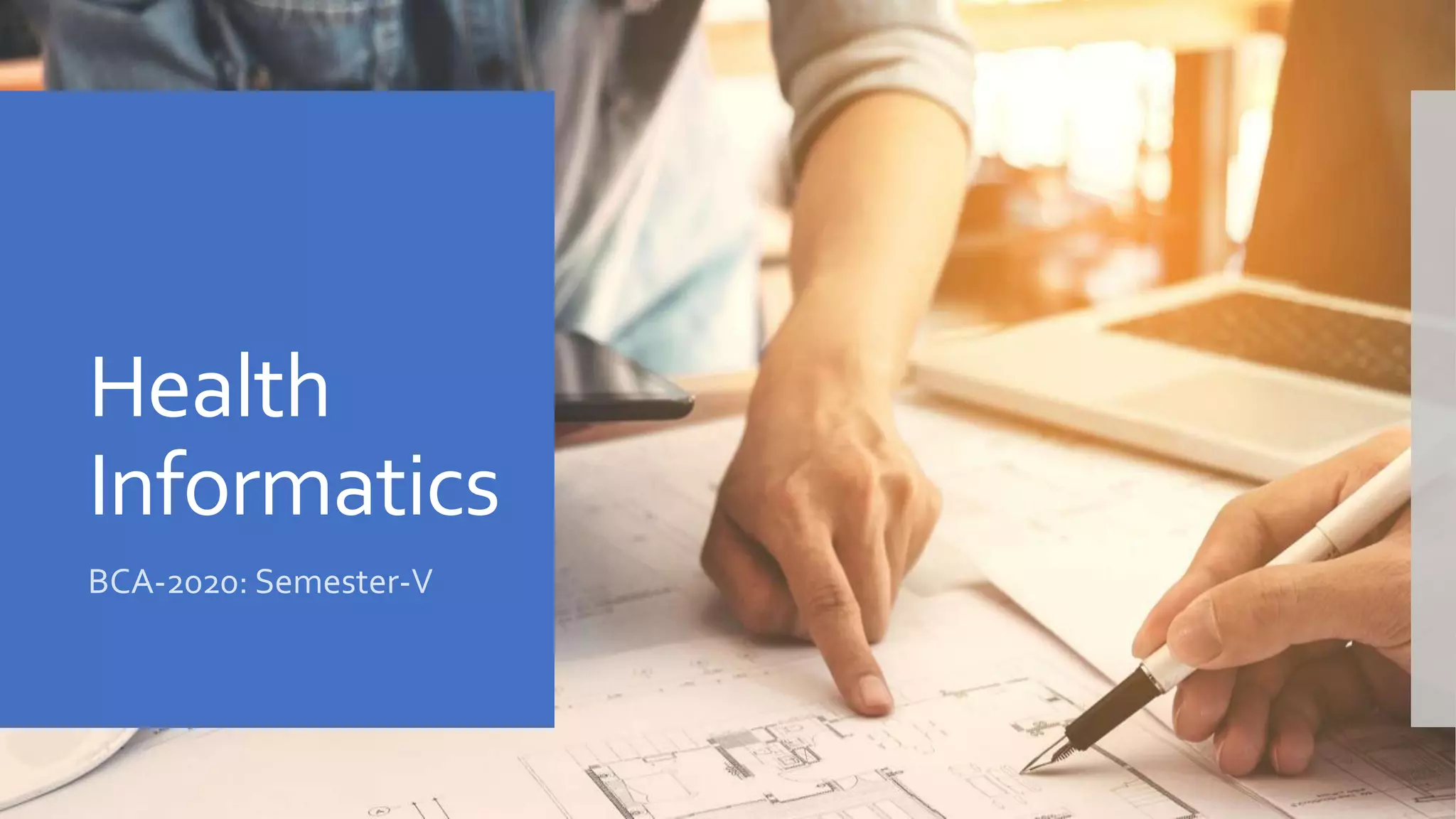
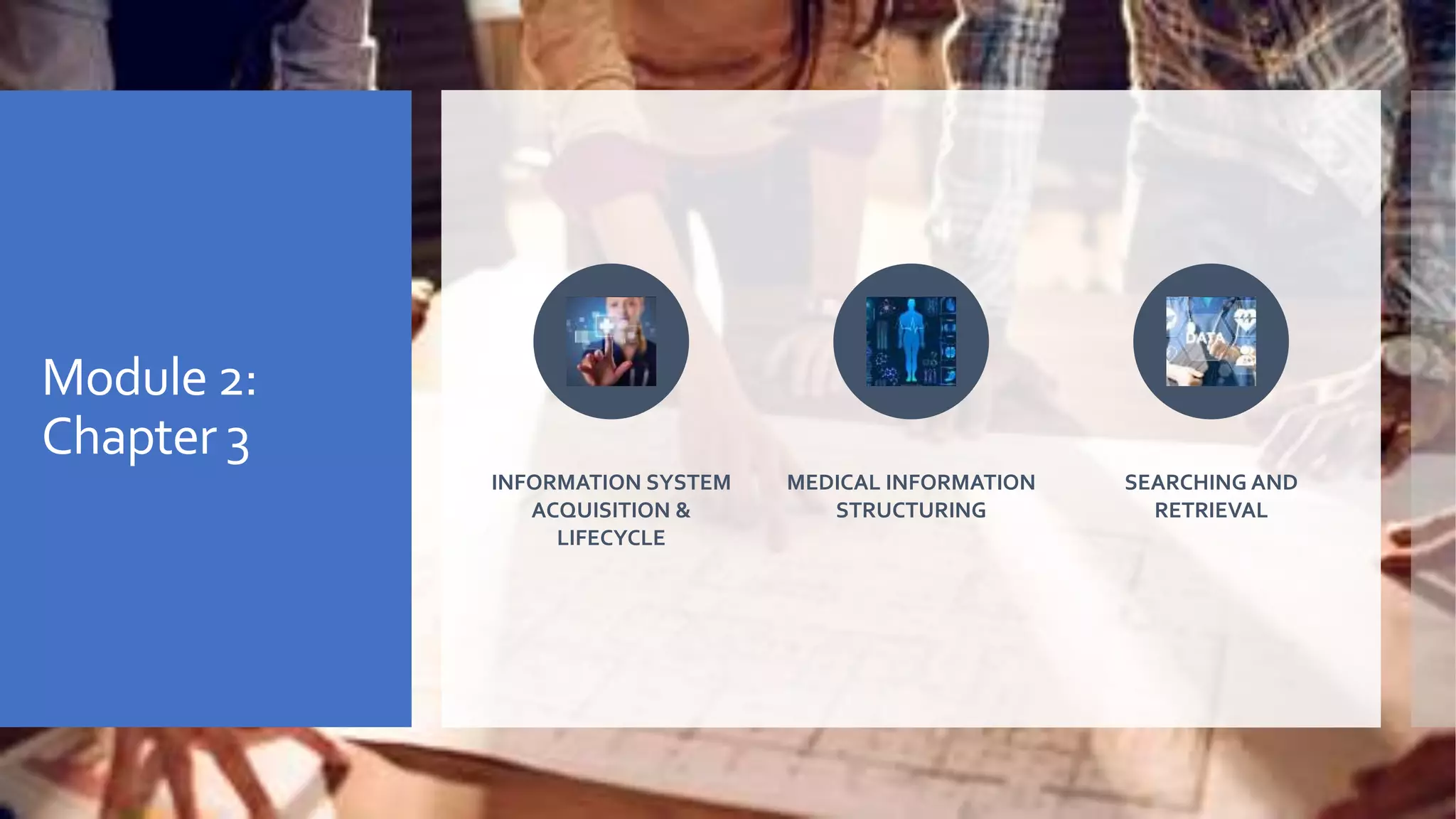
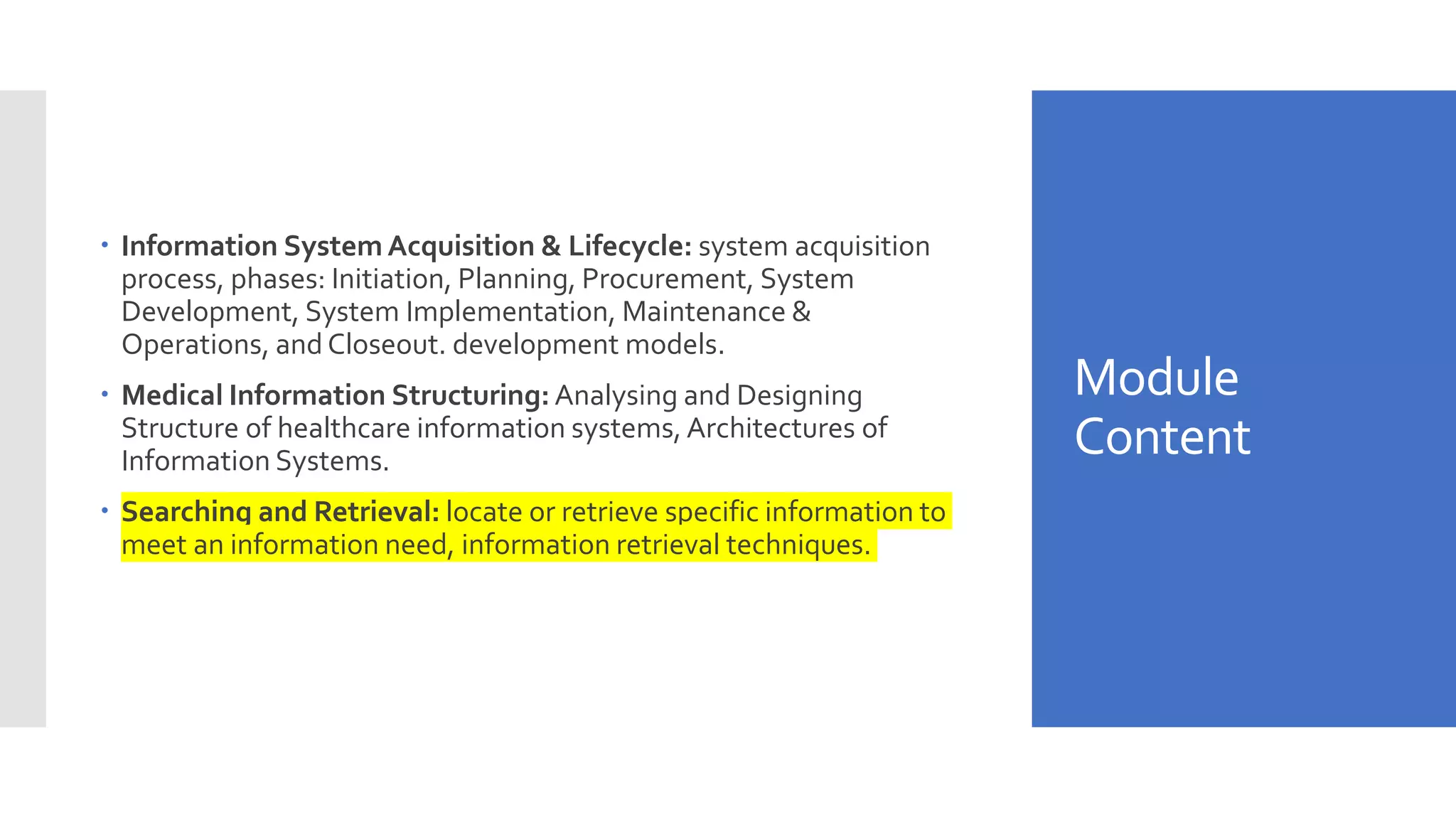

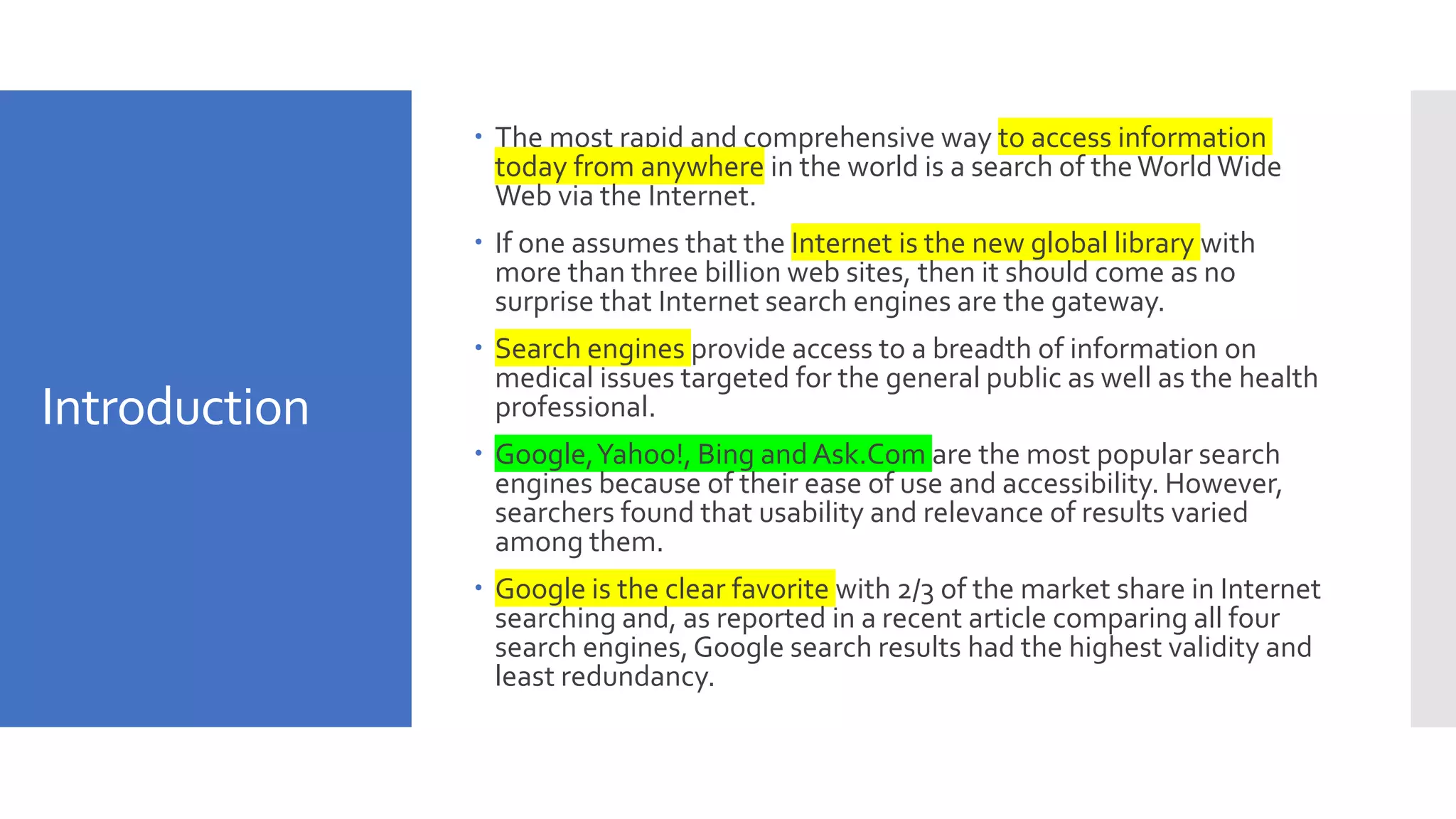
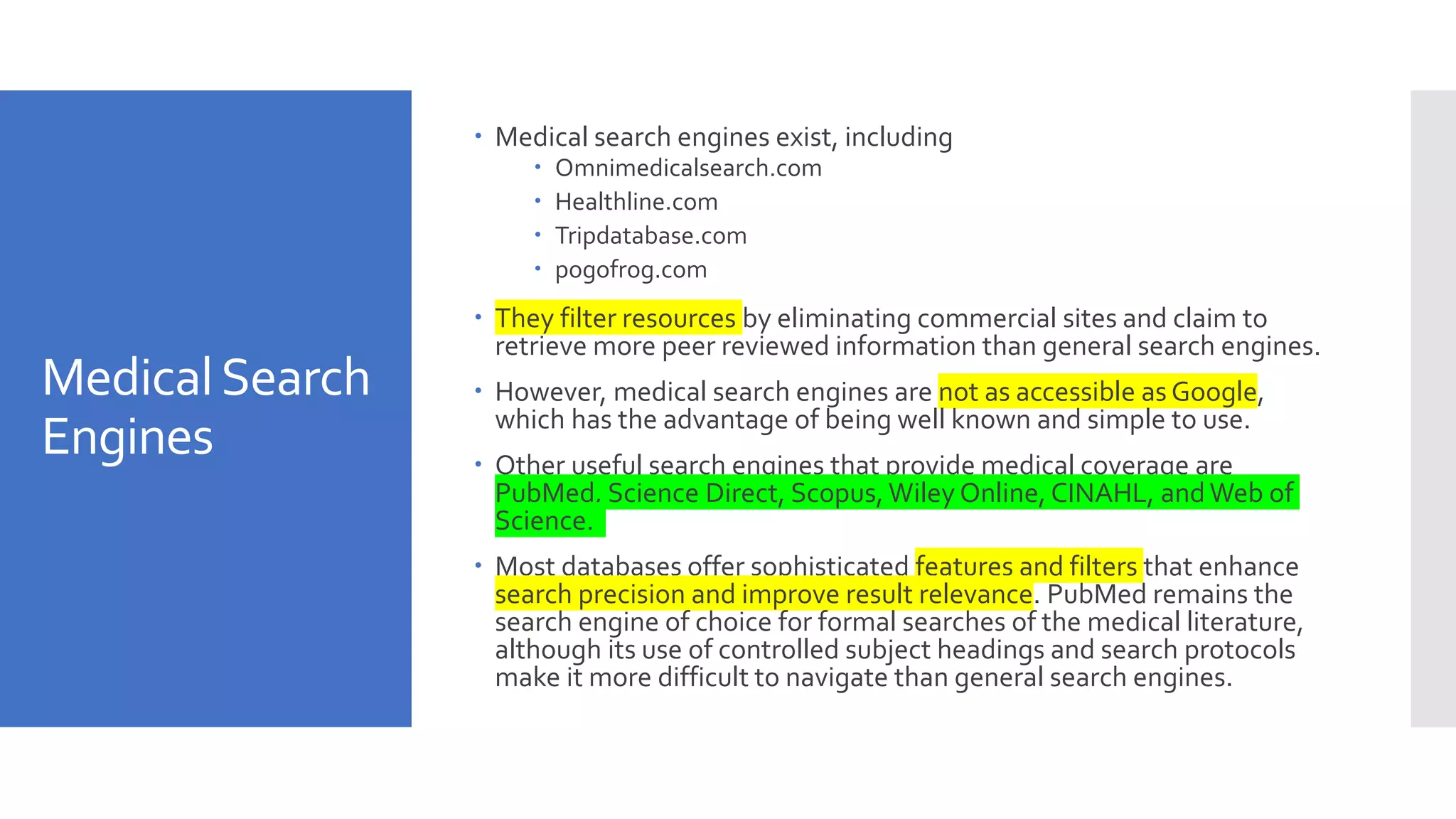
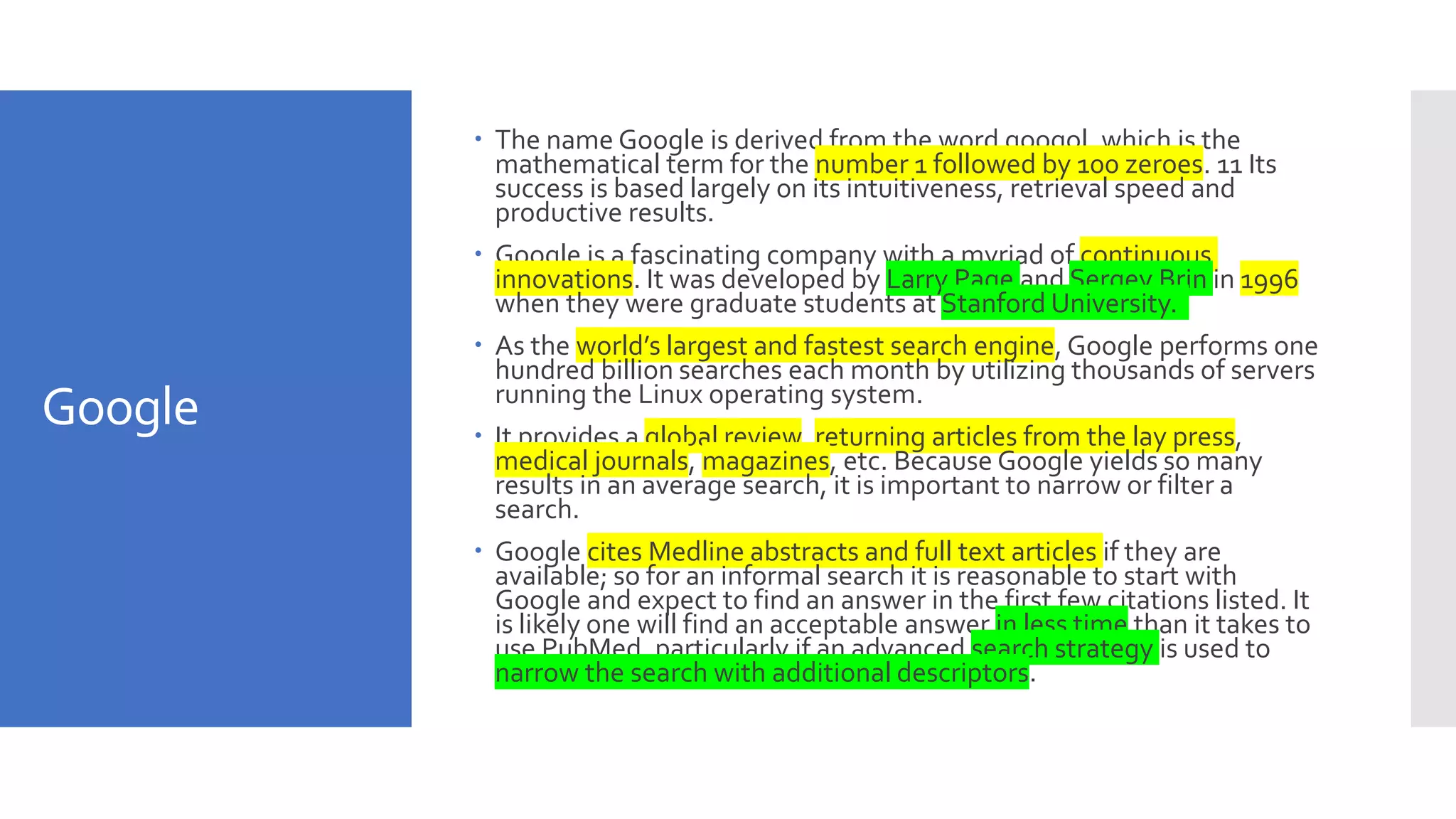
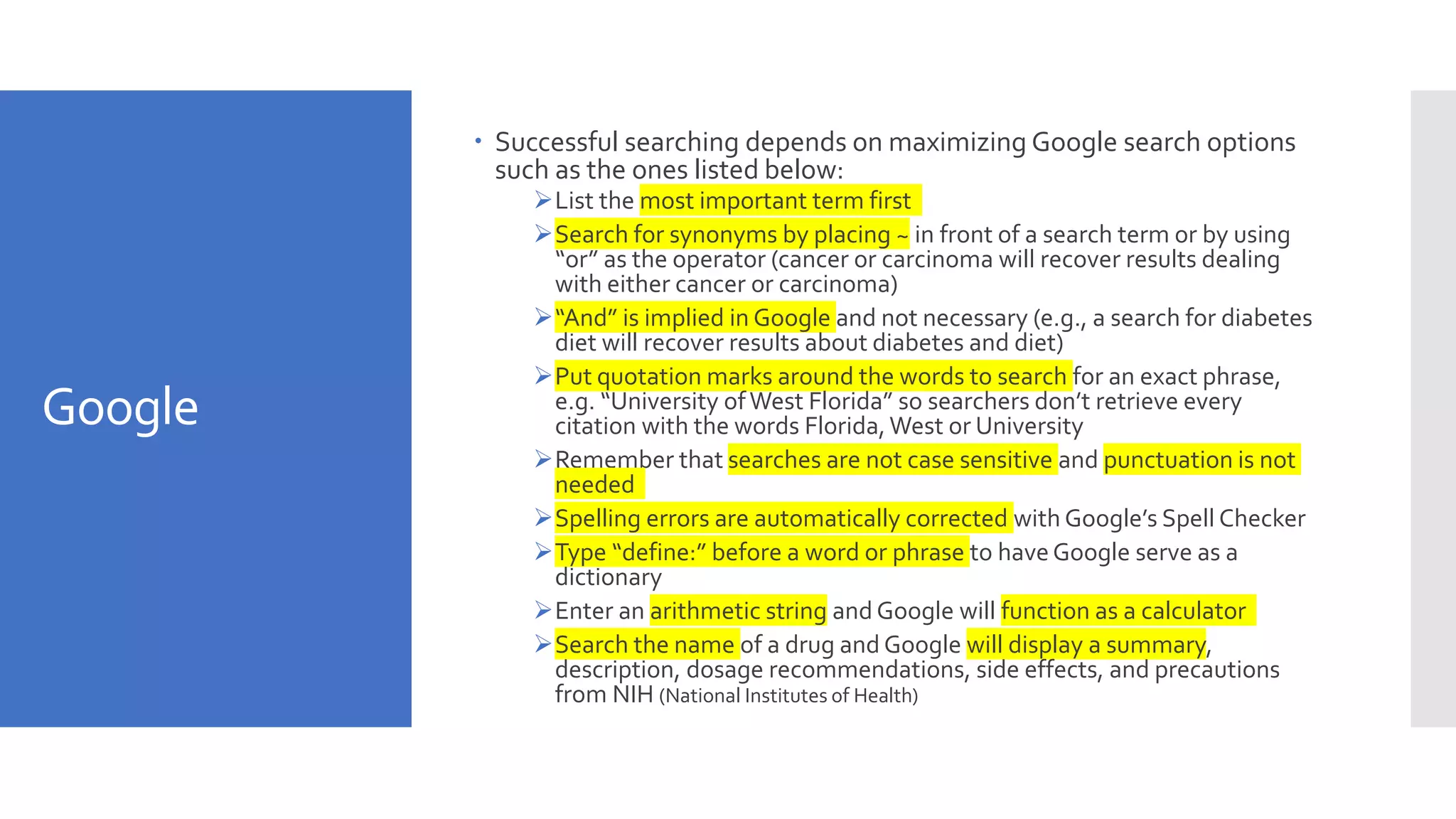
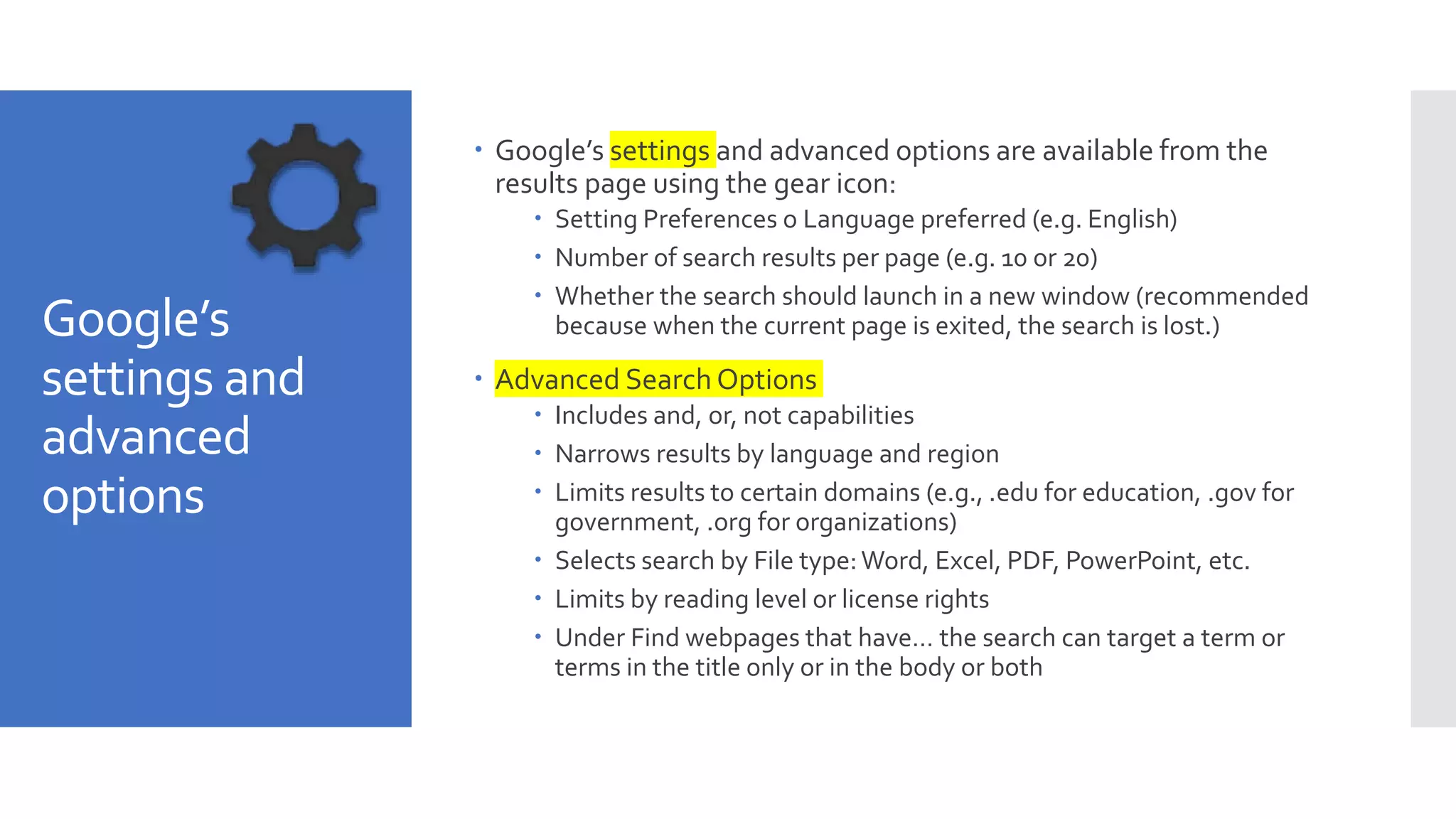
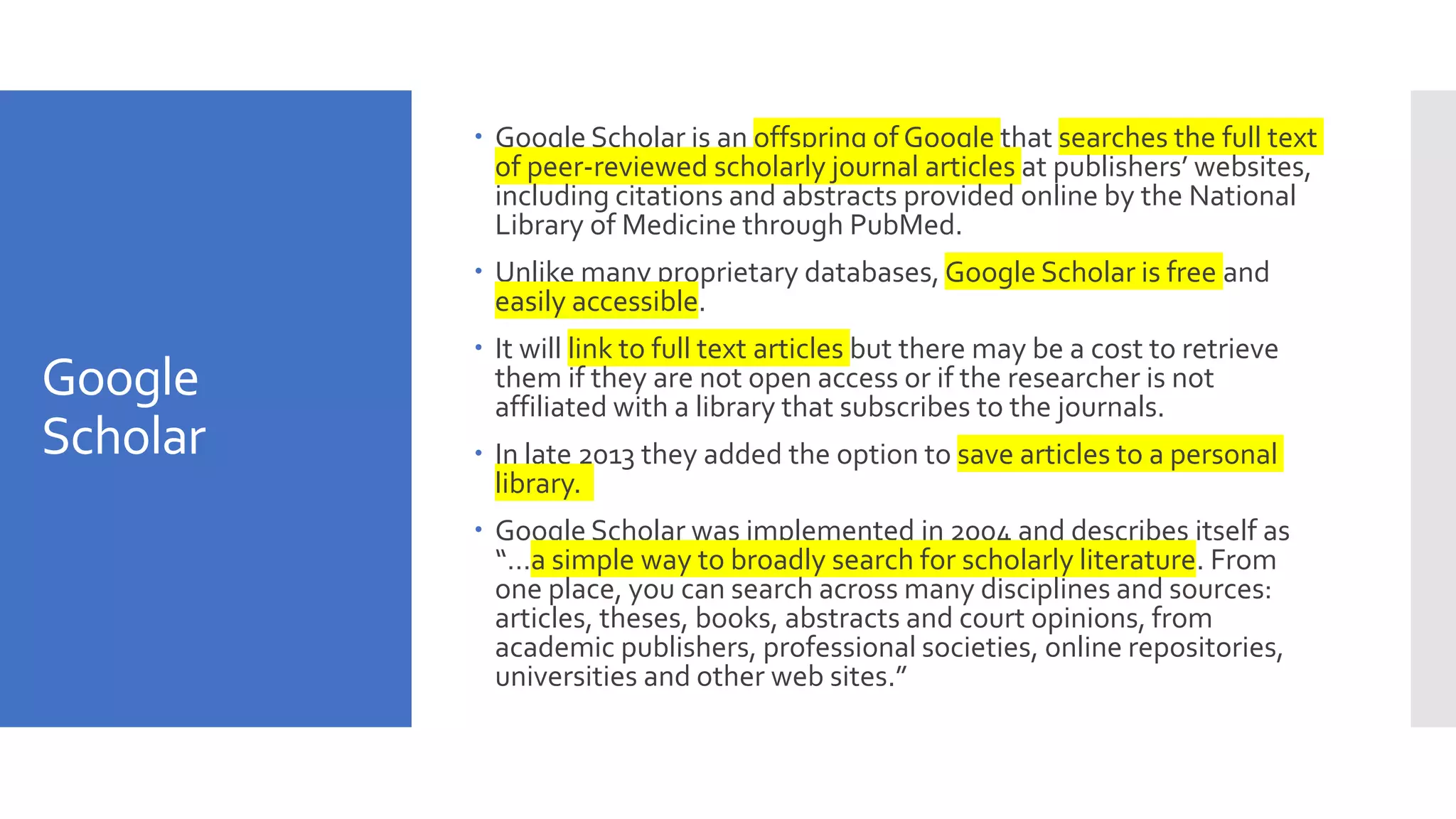

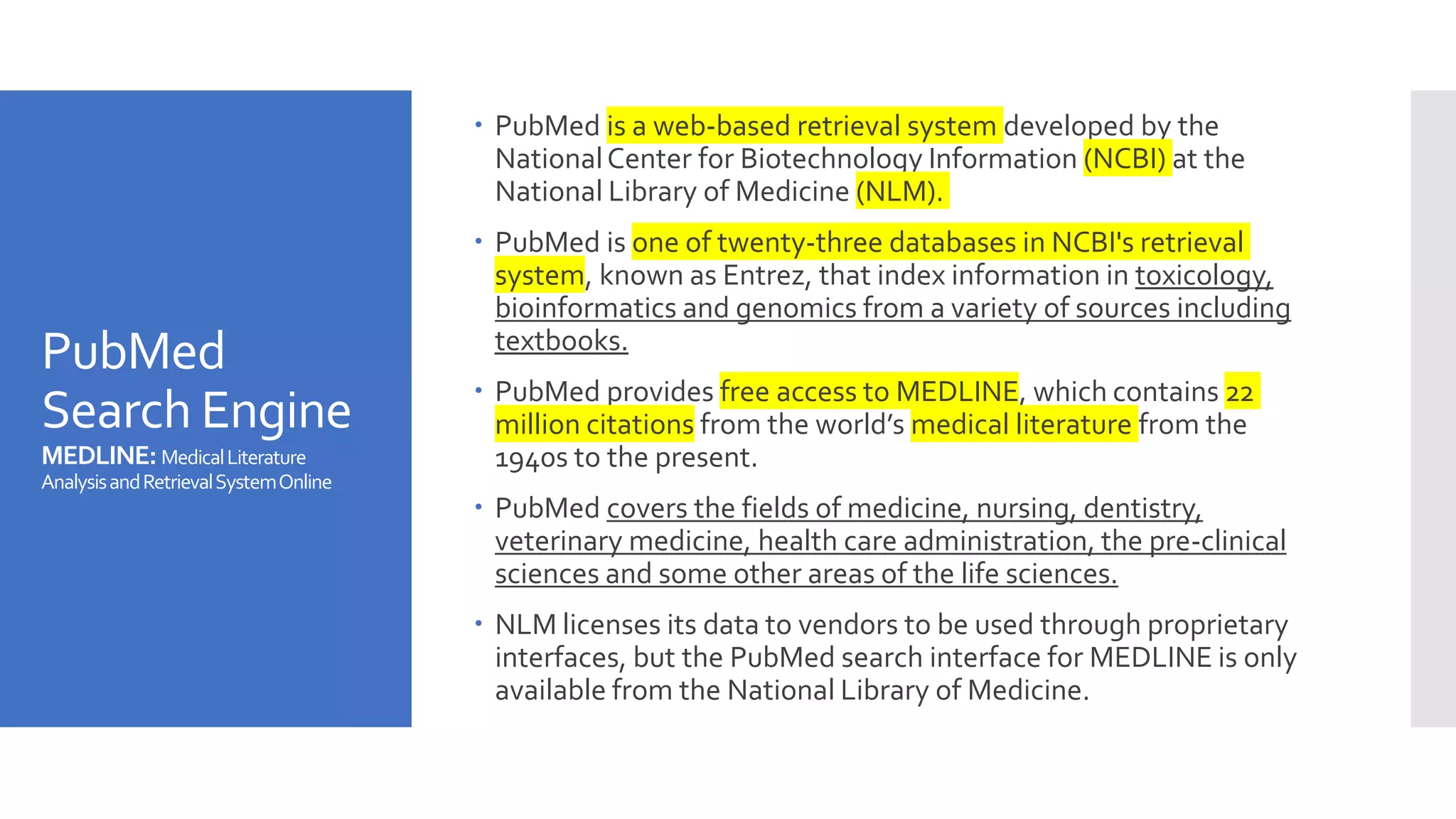
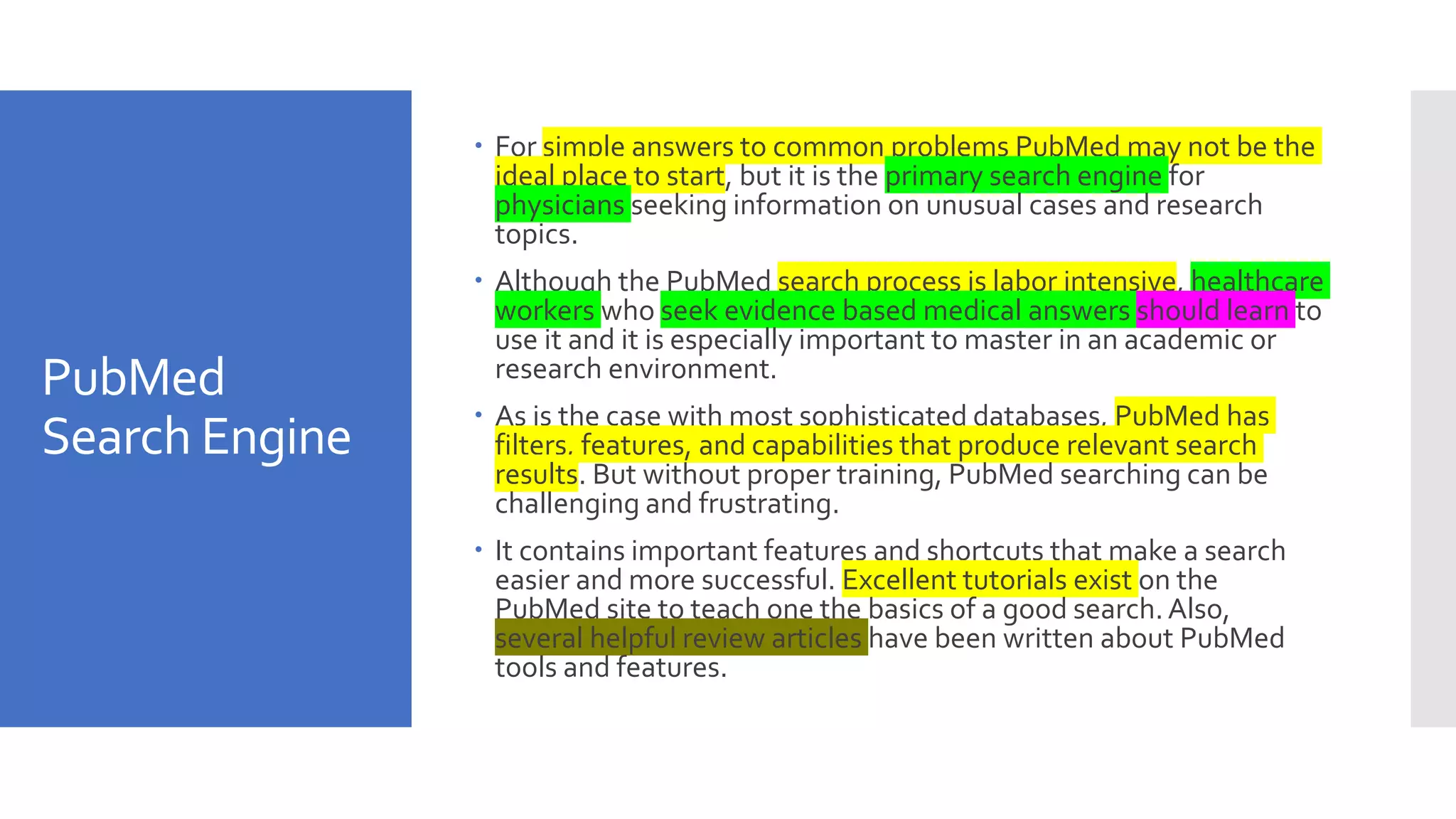
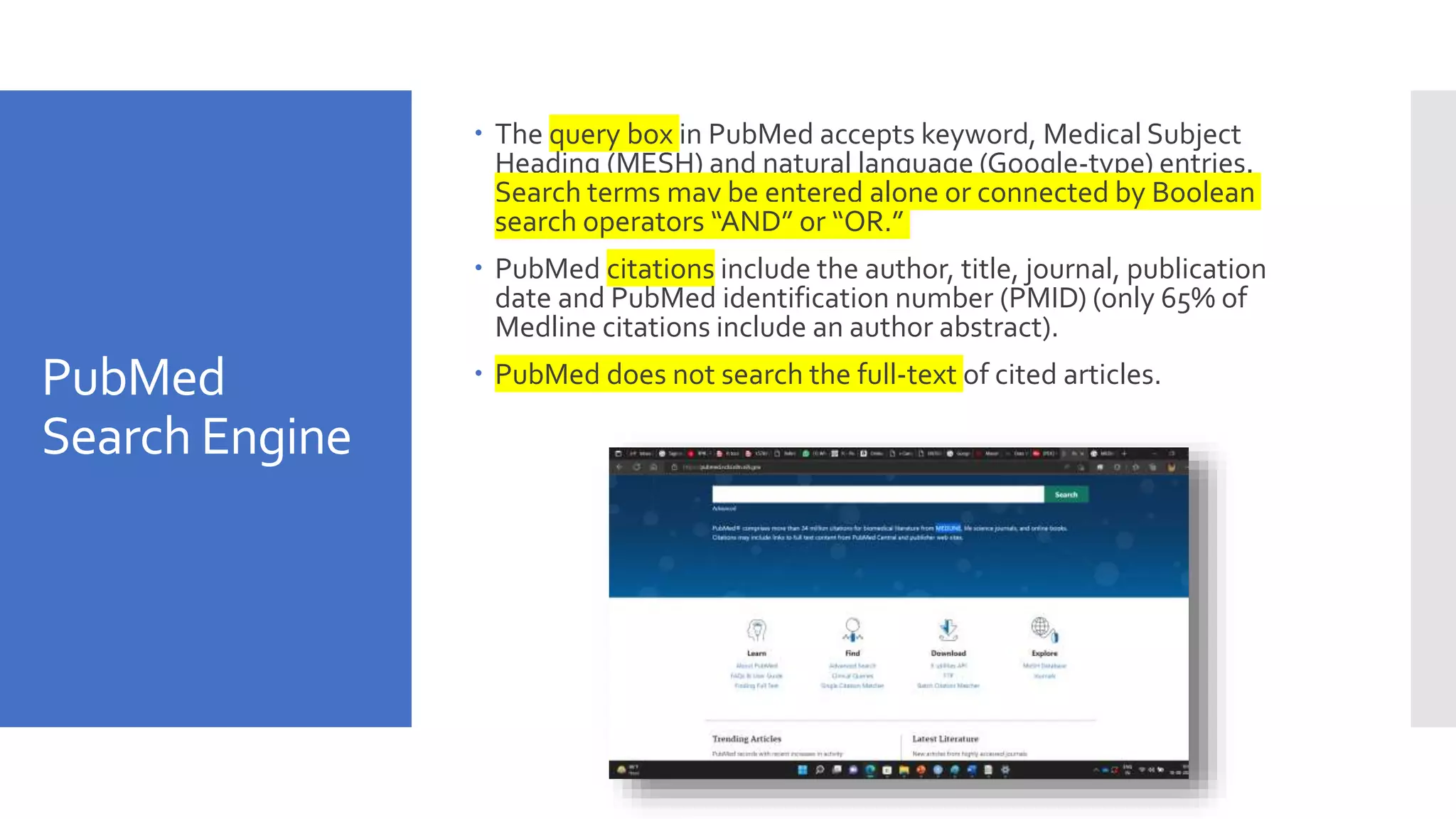
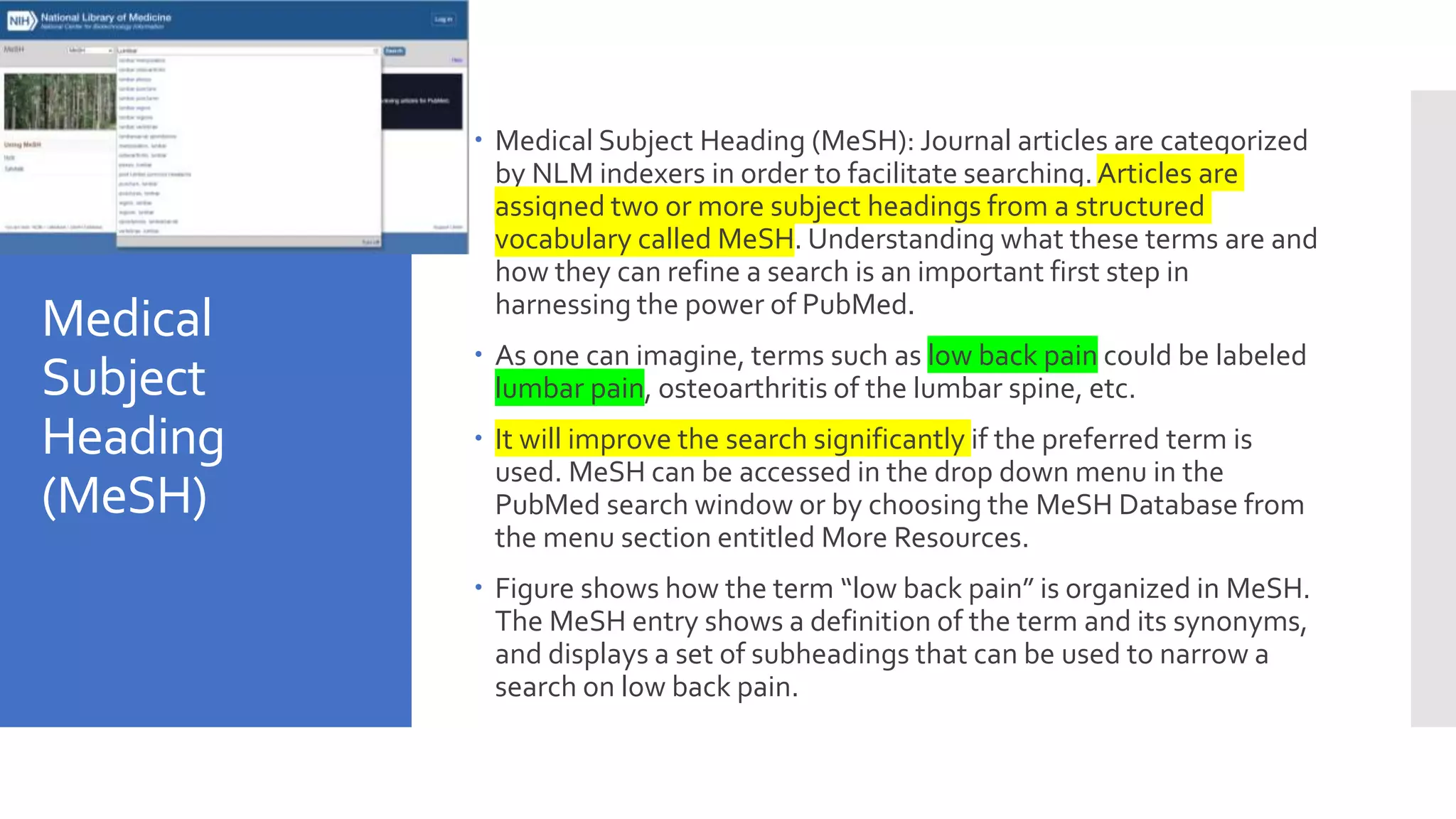

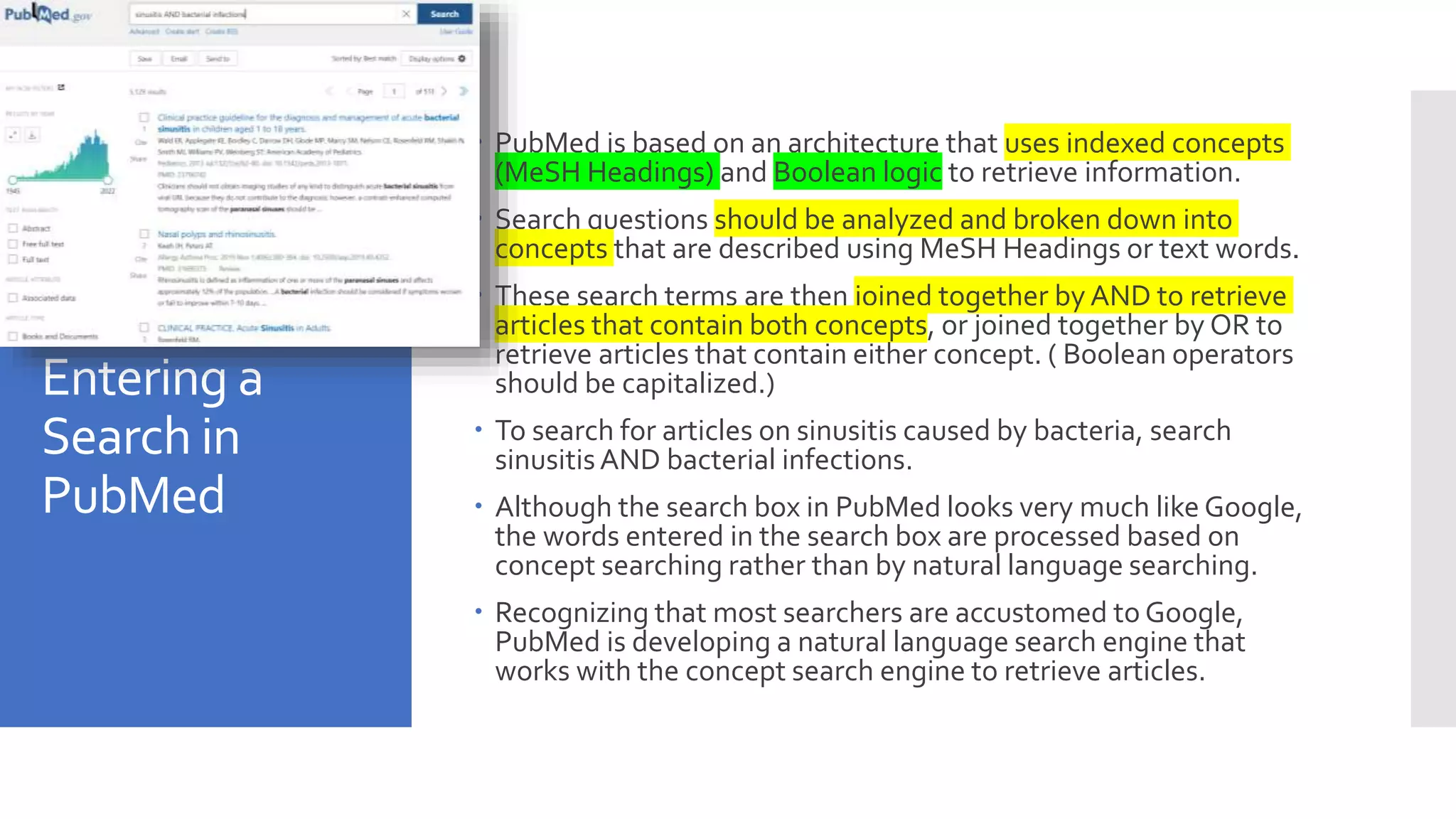
![Selecting
limits in
PubMed
Selecting limits: Once the concept search has been entered one may limit the
search with filters.
In addition to searching for articles that list sinusitis as the main topic (sinusitis
[MAJR]), we have limited our search by age (Adult: 19 to 44), humans, core
clinical journals (all of which are in English), the past five years, and those with
links to free full text. (We could have also selected clinical trial, random
controlled trial or review, or checked the box for all four.)
The search with limits greatly decreased the number of returned citations and
improved the quality of the results. Requesting free full text articles also
reduced the search considerably.](https://image.slidesharecdn.com/healthinformatics-module2-chapter3-220823095356-307195aa/75/Health-Informatics-Module-2-Chapter-3-pptx-18-2048.jpg)
